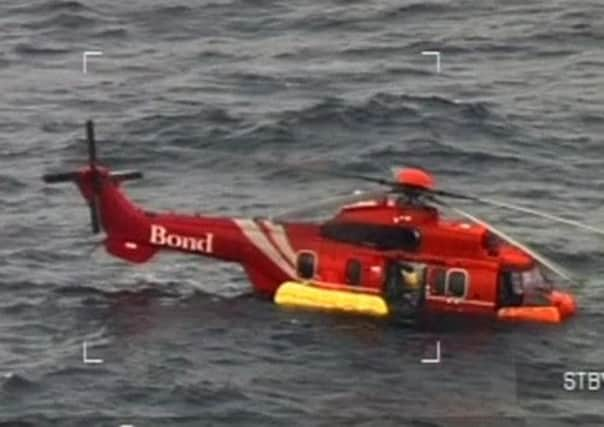Oil workers ‘shaken’ by Super Puma ditchings


Two thirds of the 1604 oil workers who took part in an online survey, commissioned by Oil & Gas UK, reported that their confidence in the safety of the Super Puma EC225 had decreased since the two incidents in 2012.
All 16 Super Puma EC225s operating in the North Sea - one-fifth of the entire offshore fleet - have been grounded since 22 October when a CHC-operated Super Puma EC225 was forced to ditch off Shetland. Another Super Puma EC225 ditched 30 miles off the coast of Aberdeen in May last year.
Advertisement
Hide AdAdvertisement
Hide AdBoth ditchings led to the discovery of “potentially catastrophic” mechanical failures in the gearbox - identical cracks near a weld in the main vertical gear shaft of the helicopter, manufactured by Eurocopter. In both cases, tests have also shown identical problems which resulted in a false alarm being issued over a lubrication system failure.
Les Linklater, the leader of the Step Change in Safety team at Oil & Gas UK, said the results of the survey were not surprising but underlined the need for the industry to improve the way in which it communicates its stance on helicopter safety to the workforce.
He said: “We did not expect it to be good news and, in effect, the survey results told us that, entirely understandably, the two aircraft having ditched in the sea that confidence has decreased.
“It shows that we need to do more in terms of engaging and communicating to the workforce so that they understand the measures that are being taken by all the stakeholders to guarantee that when these aircraft return to service it will be safe to do so.”
Mr Linklater said: “We are going to continue to communicate around the 225 issue in an open and transparent manner, as we have done since May last year. We recognise that the 225 will return to service and, as a result, we need to build workforce confidence.”
He stressed: “We have been very clear since day one that the 225 would not return to service until we had been assured that the root cause had been identified. Eurocopter have done this and given us those assurances that they have absolutely identified the root cause which is really important for us.
“But that is the first step in a long process. What we need now are Eurocopter’s additional safety measures - barriers that we need in place to ensure this doesn’t happen again - and those have to be accepted by both the European and national regulators. There also has to be independent verification that Eurocopter has indeed found everything they can possibly find.
“And we need to communicate this in a clear and concise manner to our offshore workforce.”
Advertisement
Hide AdAdvertisement
Hide AdMr Linklater pledged: “Whilst we appreciate that people are still managing operational issues, safety has to be the priority.We are listening to the workforce and that is a priority for us. We have asked the question and we need to show that we have listened and go away and do something with the answer. That was what today was about for us.”
Today’s aviation summit was held a week after a Eurocopter spokesman announced that the EC225 technical problems were now “fully understood” and that, once safety measures are validated by the airworthiness authorities, the first EC225s could return to full service as early as the end of this month.